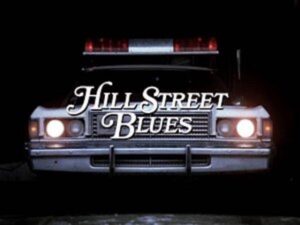What we see on a screen or read in the news has a major effect on how we think about substance use
By Jason Langendorf
Throughout recorded history, art, entertainment and media have been our most powerful tools for socialization. Whether those expressions were conveyed by cathode-ray tube, radio waves, a printing press or cave drawings, they have helped us share and reinforce ideas, build and curate cultures, and learn about each other and ourselves.
It’s as true for substance use and addiction as it is for any other subject: We learn what we see (and hear). So whether your first exposure in media was to an inebriated Looney Tunes stork, Mayberry’s “town drunk” Otis Campbell or Jessie Spano’s caffeine-pill spiral at Bayside High, chances are the moment made a lasting impression. A chapter, a scene or even a single line in a TV commercial can be a seminal experience. If you’re of a certain age and don’t have a teenager’s agonized “I learned it by watching you!” seared into your subconscious, you probably grew up without a television.
Because of the outsized influence media have on the way we think and talk about substance use, addiction, treatment and recovery, it’s worth considering whether the portrayals and language we encounter on screen, in print and elsewhere are accurate and appropriate. At the same time, it’s important to make certain distinctions about that content.
Today there seem to be as many people making media offerings as there are consuming them. Content producers’ handling of the subject of addiction is more layered and diverse than ever.”
Context Matters
Entertainment and information clearly can coexist, but one should not be confused with the other. A box-office thriller serves a different purpose than does a front-page newspaper article, and the two play by very different rules. Cinema, music and literature are open to wide interpretation, frequently employing irony, satire and other devices to tell a larger story. In its purest form, news is designed to inform directly and without bias, upholding a standard of integrity and accountability.
If, for instance, a movie character uses the word “junkie,” that language may not reflect the views of anyone involved in the making of the film. It may depict a stereotype the screenwriter would like to see changed, or it may be in service to a plot point.
But if a news story—or even a newspaper editorial or cable news opinion piece—invokes the word “junkie,” the writer or pundit is on the hook for it. Journalists and news outlets are expected to be models of objective language and attitudes, employing straightforward descriptors rather than loaded terms. So although you might view Face the Nation and Harold & Kumar Go to White Castle on the same screen, they should be seen through different lenses.
Addiction Stigma in the Media
Just as America’s attitudes about substance use and addiction have evolved over the years, so too has the surrounding media zeitgeist. But it isn’t a linear or one-directional relationship. Like so many other cultural expressions, art both imitates and influences life.
It would be too simplistic to say times have changed—that depictions of addiction and recovery in art, entertainment and media are smarter, more compassionate and less glamorized than generations ago. Even on today’s content landscape, you don’t have to search far or wide for a bad cliché, an unfortunate portrayal or a hackneyed line. Stigma around addiction remains deeply entrenched.

On the other hand, it’s encouraging to look back and consider some of the media touchstones that helped counteract that stigma. In the 1955 film The Man with the Golden Arm, Frank Sinatra provides a progressively sympathetic take on a former prisoner with addiction who struggles with his recovery after his release. The stark, haunting lyrics of Neil Young’s 1972 song “The Needle and the Damage Done” pull no punches yet also strike a note of compassion: “I sing the song because I love the man.” In the ’80s, the TV cop drama Hill Street Blues brought us Frank Furillo, the precinct captain who occasionally struggles with his recovery from alcohol addiction but is never framed as anything but capable and respected.
In a media culture that reflects and effects change, it shouldn’t have surprised us when First Lady Nancy Reagan appeared on the hit sitcom Diff’rent Strokes almost 40 years ago to pitch her “Just Say No” message to a network audience. Just as it should come as no shock that rapper Snoop Dogg, a hardcore cannabis aficionado, is now a mainstream celebrity rubbing elbows with Martha Stewart.
Modern Media and Addiction
Today there seem to be as many people creating media offerings—from movies, television and streaming series to podcasts and radio, from newspapers, magazines and websites to countless forms of social media—as there are consuming them. Content producers’ handling of the subject of addiction is more layered and diverse than ever.
But if there’s a through line to be found across current art, entertainment and media, it’s this: realism. Whereas in the past, substance use and addiction were often sensationalized, glamorized or glossed over, media makers today seem to be striving for greater transparency and authenticity. By showing all sides of substance use, removing judgment and skipping the preachy tropes, producers seem to be trusting the intelligence and savvy of their audiences.

On the big screen, the trend took shape in films such as Trainspotting (1996). In TV, it was The Wire (2002–08). As documentaries and true crime stories have grown in popularity, those producing fictional accounts haven’t spared audiences the grit. The TV series Mr. Robot (2015–19), for instance, offers a mostly quiet, nuanced portrayal of substance use and addiction while neither sensationalizing nor sugarcoating their consequences. Meanwhile, the current TV series Euphoria brings humanity and a sharp focus to addiction, sparing none of the traumatic details and likely initiating more prevention than every after-school special and PSA combined.
At TreatmentMagazine.com, we’ll continue to follow media trends, identify the bad actors and highlight the content makers who are helping the public better understand addiction and support evidence-based policy, education, treatment and recovery. Browse through some of our coverage of addiction in art, entertainment and media below.
Your TreatmentMagazine.com Art, Media and Entertainment Primer
The Media’s Hits and Misses with Hunter Biden’s New Book (4/15/21)
Three Men and an Addiction Podcast (4/15/21)
A Legendary Treatment Advocate Lives On with the Neil Lasher Fund (4/13/21)
Why Demi Lovato’s YouTube Series Matters (4/8/21)
Demi Lovato: Dancing With the Devil (3/24/21)
What’s Lazarus Letcher’s Favorite Inclusive Recovery Resource? (3/23/21)
The Power of Music Therapy in Treating Addiction (3/18/21)
“Sound of Metal” Speaks Volumes About Addiction Recovery (3/16/21)
Longtime Sportswriter Tells His Grandson’s Story of Addiction (3/11/21)
Phish Frontman to Open Vermont Addiction Treatment Center (3/9/21)
On the Mend (3/3/21)
Variety’s Recovery Issue Offers Hope and Community (2/18/21)
The Faces of Canada’s Opioid Epidemic (2/18/21)
Stigma Can Kill: Words Matter in Addiction (2/16/21)
The (Sober) Curious Case of Julia Ghaith (1/26/21)
Lifetime AMA Award for Penny S. Mills and “In Recovery” Wins Best Podcast (12/10/20)
Recovery Cards Offer “Words I Didn’t Have” (12/8/21)
Study: Video Games Don’t Cause Mental Health Problems (10/27/21)
How We Talk About Hunter Biden Is the Real Shame (10/22/20)
Ready to Binge-Listen to “Last Day”? (10/22/20)
“Last Day” Turns Its Mic to Suicide – in Search of Help and Hope (10/22/21)
October Hurts (10/20/20)
Country Musician’s New “Hard Way to Go” Song Written for the Recovery Community (10/8/20)
MTV Series “16 and Recovering” Premieres During National Recovery Month (9/1/20)
Sesame Street Spotlights Addiction (8/31/20)
The Addiction Backstory of Karli the Muppet (8/2/20)
Top photo: Kal Visuals














